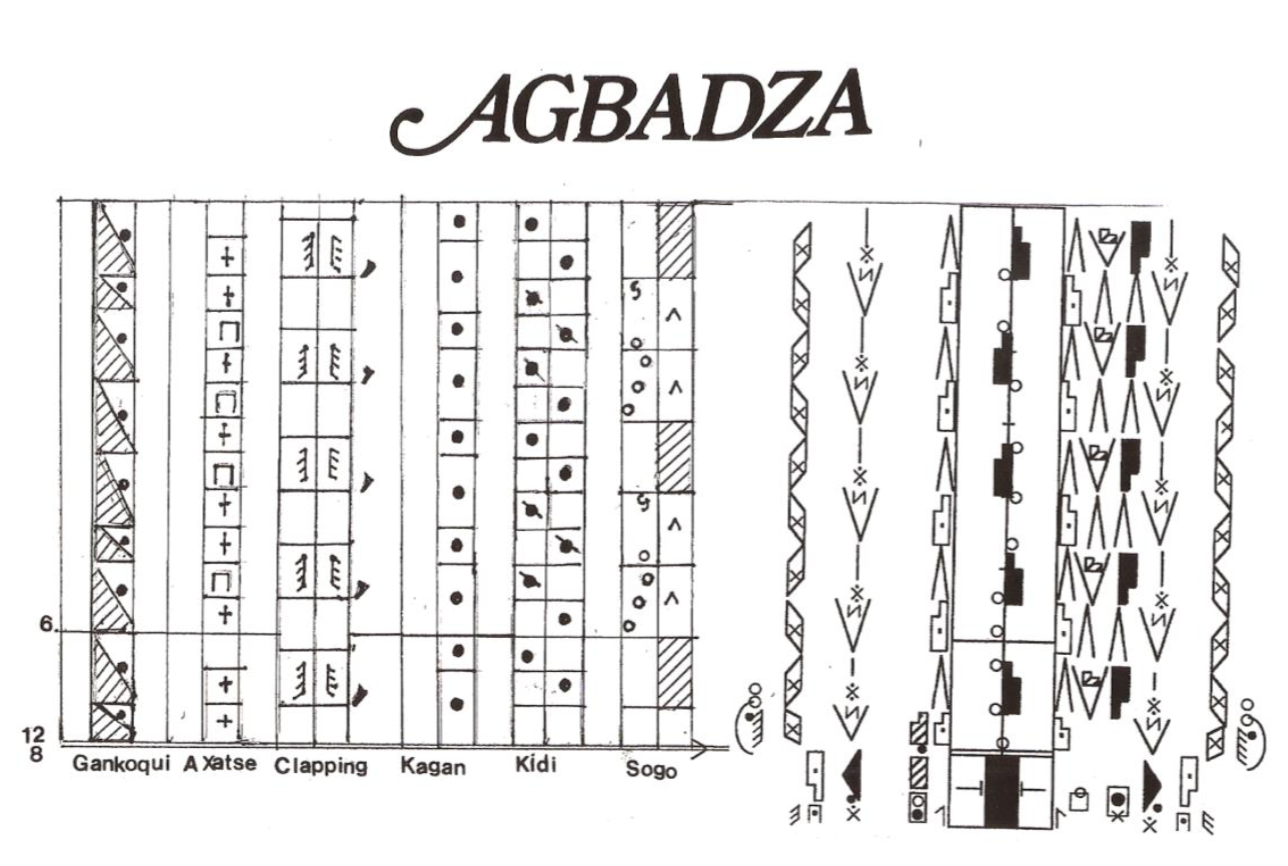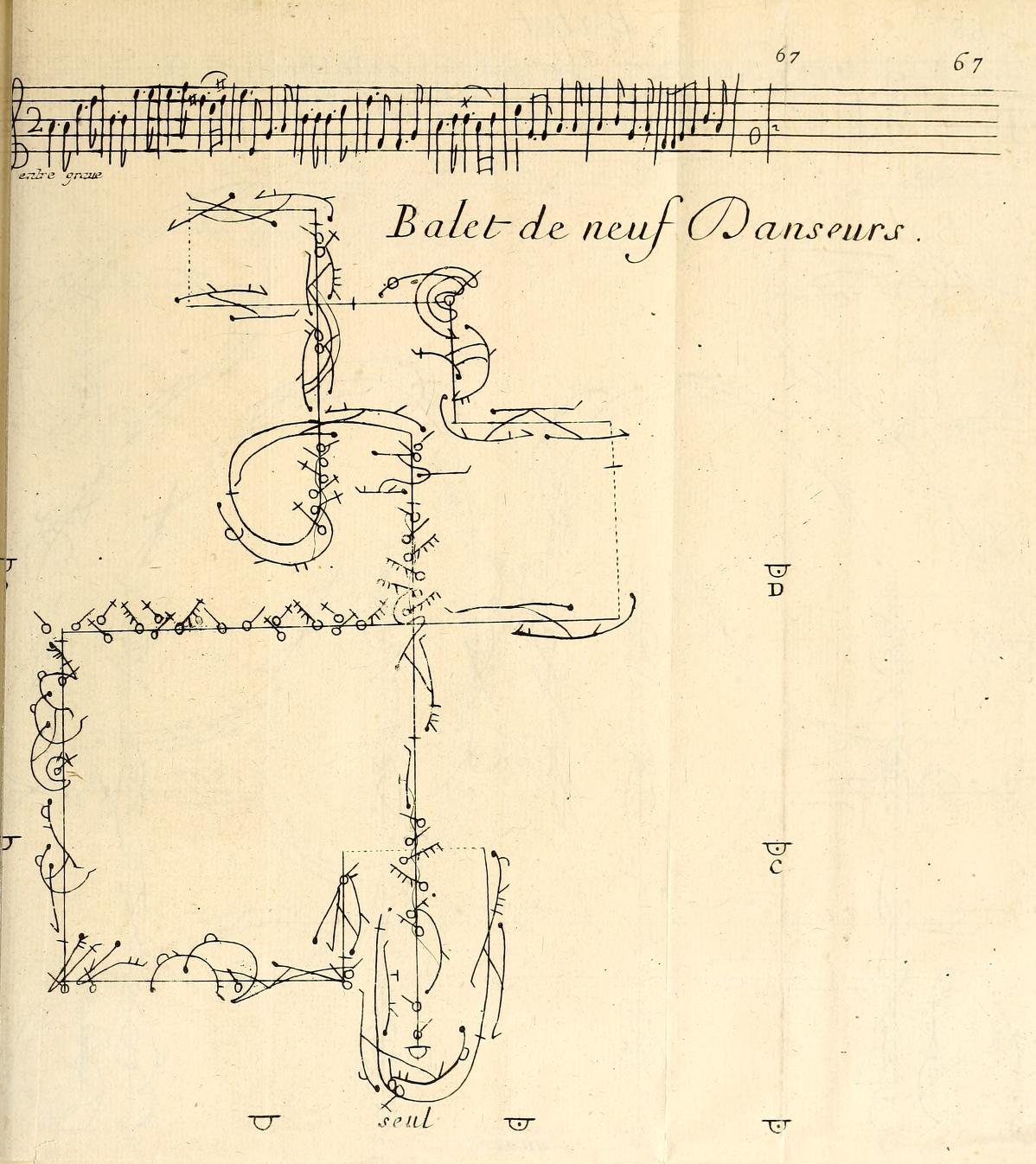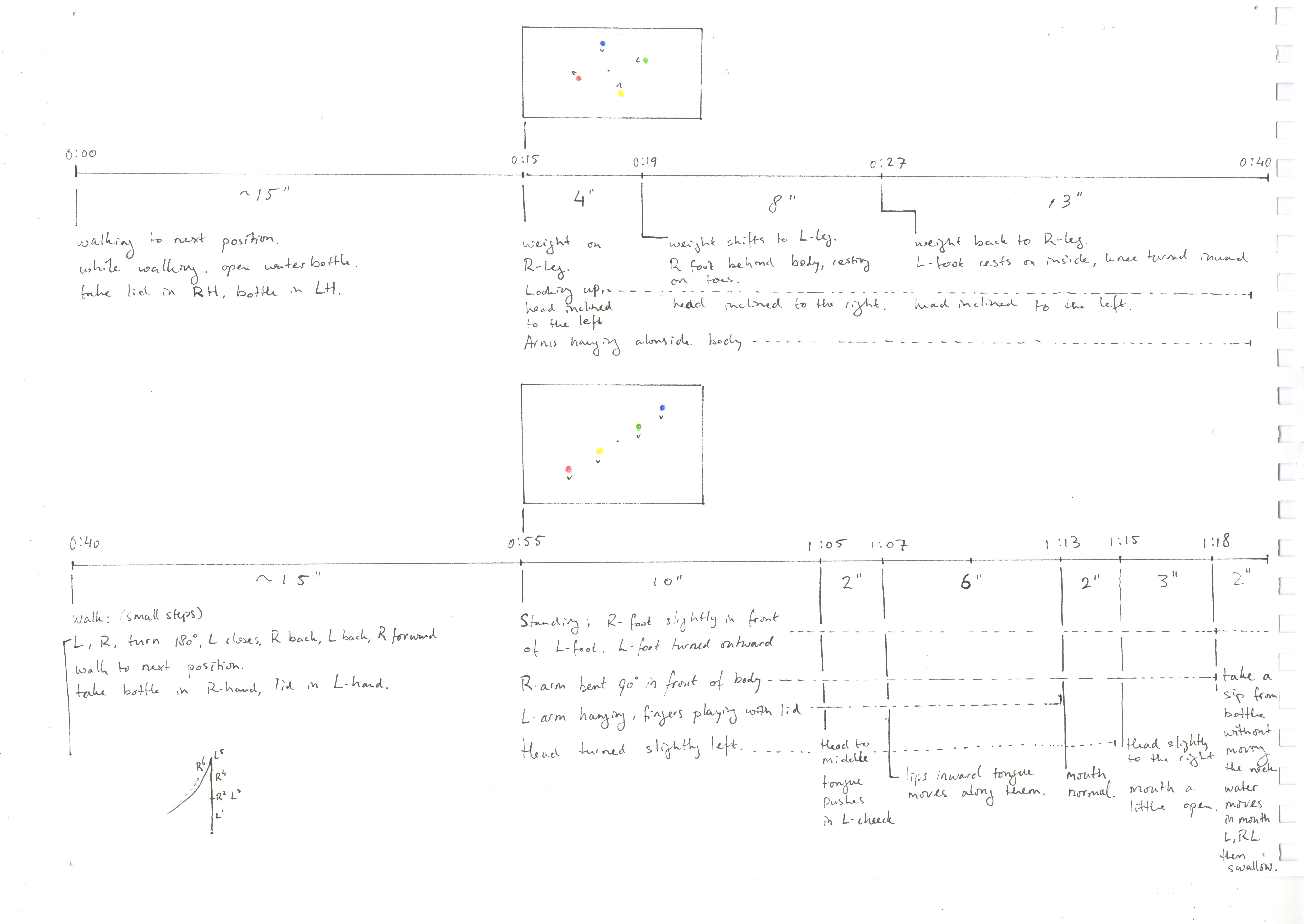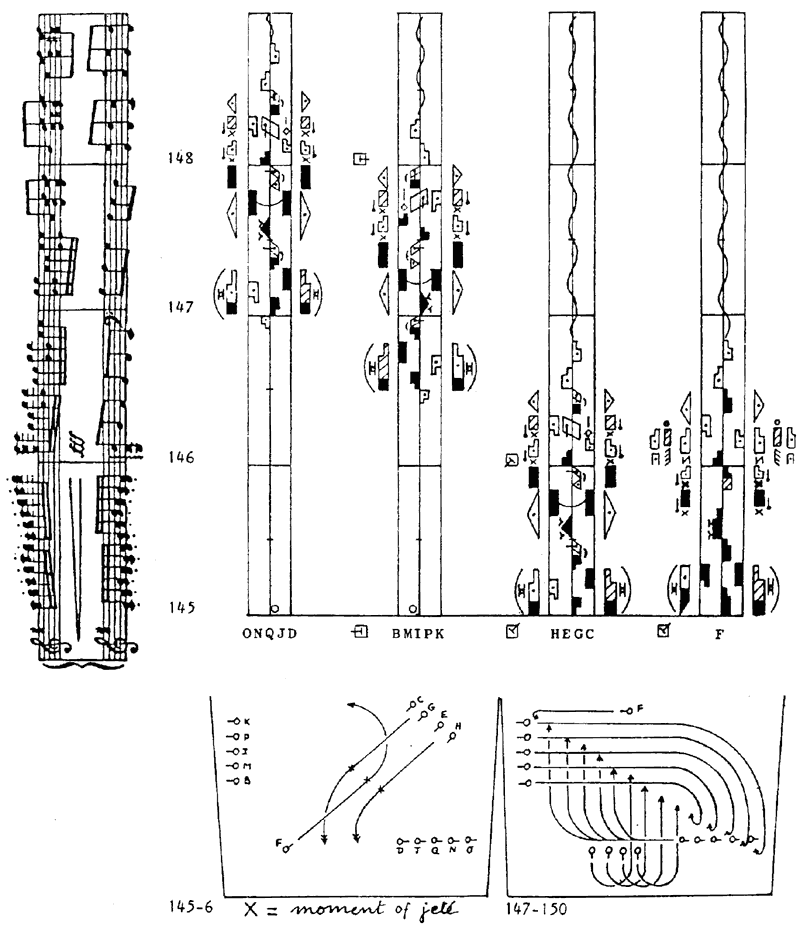
Dance Notation Notations, Dance, Performance art
A dance notation system is usually regarded as a representation tool rather than a creative tool. This paper uses the indeterminacy approach as a creativity method to assist body-based limb exercise. Expand. 2. Save. The visual representation of spatialisation for composition and analysis.

dance notation dance notation system Students Britannica Kids Homework Help
Benesh notation example. Benesh Movement Notation (BMN), also known as Benesh notation or choreology, is the literacy of body language, it is a dance and movement notation system used to document dance and other types of human movement. Invented by Joan and Rudolf Benesh in the late 1940s, the system uses abstract symbols based on figurative representations of the human body.

dance notation for "The Princess Ann's Chacone", 1719 English dancing master, Isaac Graphic
dance notation system An example of the dance notation system devised in the 1950s by Rudolf and Joan Benesh. Choreology, developed by Joan and Rudolf Benesh in 1955, is based on a more clearly visual rather than symbolic form of notation. It is written on a five-line stave, recording the dancer's position as viewed from behind.

Dance Notation
Completed in 2010 in Mau Wu Tsai Village, Hong Kong (SAR). Images by Sergio Pirrone . 2006, the competition Thomas Coldefy and Isabel Van Haute, equipped with solid international experience.

Tufte, E. (2001). Dance Notation Commotion and Order. In Envisioning Information (p. 114
Here for the first time is an account of how each of thirteen historical as well as present-day systems cope with indicating body movement, time, space (direction and level) and other basic movement aspects of paper. A one-to-one comparison is made of how the same simple patterns, such as walking, jumping, turning, etc. are notated in each system.

Tufte, E. (2001). Dance Notation Commotion and Order. In Envisioning Information (p. 117
Two popular dance notation systems used in Western culture are Labanotation (also known as Kinetography Laban) and Benesh Movement Notation. Others include Eshkol-Wachman Movement Notation and DanceWriting. Many dance notation systems are designed for specific types of dance.

An example of the dance notation system developed by Noa Eshkol and Abraham Wachmann
A LABANOTATION BASed onTOLOGY for REPRESENTing DANCE MOVEMENT and results in SEARCHWORKS CATALOG. LABANOTATION VIQUIPèDIA L ENCICLOPèDIA LLIURE. DR NORMAN STANFIELD THE STUDY OF DANCE. ON THE USE OF DANCE NOTATION SYSTEMS TO GENERATE MOVEMENTS. CHOREOGRAPHICS A PARISON OF DANCE NOTATION SYSTEMS. ANALYSIS OF HUMAN MOTION BASED ON AI TECHNOLOGIES. VOL 23 NO 1 SPRING 1991 OF DANCE RESEARCH.

Arch Through the exploration of dance notation what can we learn about the limitations of
In comparison to most dance notation systems, Eshkol-Wachman movement notation was intended to notate any manner of movement, not only dance. As such, it is not limited to particular dance styles or even to the human form. It has been used to analyze animal behaviour as well as dance (Golani 1976). Stick figure

Dance notation Labanotation, Benesh Movement Notation, EshkolWachman Movement Notation
There are several dance notation systems that are used today around the world: Laban, Benesh, Conté, and other ones that are less known. As far as I know, it is the system developed by Rudolph Laban, known as Labanotation or Kinetography Laban, which has spread the most.

Dance Notation and Motion Capture Essay Jacob's Pillow Dance Interactive
Now widely referred to as Labanotation this system uses a vertical staff to represent the body and has symbols that indicate not only the position but also the direction, duration, and the quality of any movement.

Dance Notation
labanotation, system of recording human movement, originated by the Hungarian-born dance theorist Rudolf Laban. Labanotation grew from Laban's interest in movement, which stemmed from his early travels. He studied architecture and philosophy in Paris and worked as an illustrator before becoming involved in the performing arts.
Example of Labanotation (n.d.). Download Scientific Diagram
dance notation Table of Contents Home Geography & Travel Languages Conclusion Although good, workable systems have been around for centuries, the use of dance notation has never been an integral part of dance study and practice, as musical notation is in the study of music.

Dance Notation
Choreo-Graphics: A Comparison of Dance Notation Systems from the Fifteenth Century to the Present, by Ann Hutchinson Guest. New York: Gordon and Breach, 1989. xvi + 194 pp., illustrations, photographs, dance notation. $59. - Volume 23 Issue 1

Baroque Dance Notation Videoarcades
The dance notation system that ultimately attained precedence, Beauchamp-Feuillet notation, was commissioned by Louis XIV, apparently intended as another element of cultural achievement to augment the glory of the Sun King's reign.

Laban Dance Notation Partition, Théâtre des champs elysées, Sauce béarnaise
Laban's notation system is used as a type of dance notation in other applications including Laban Movement Analysis, robotics and human movement simulation. With Labanotation, any form of human movement can be recorded: The basis is natural human movement, every change must be noted.

the story of why dance notation
In dance, notation is the translation of four-dimensional movement (time being the fourth dimension) into signs written on two-dimensional paper. A fifth "dimension"—dynamics, or the quality, texture, and phrasing of movement—should also be considered an integral part of notation, although in most systems it is not.